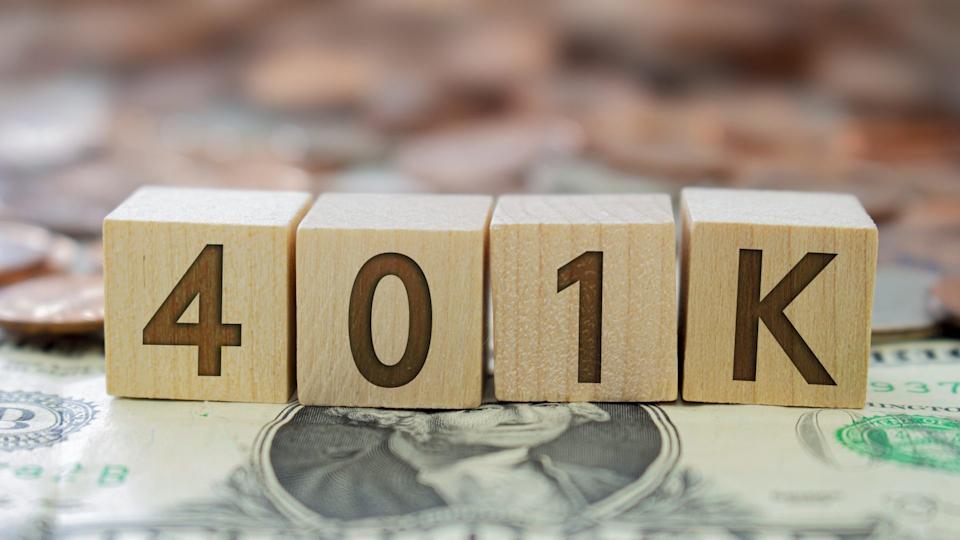7 Things You Must Do When Your 401(k) Account Reaches $50,000

If you have been planning carefully for retirement and have been saving in a consistent, steady manner, you’re on the right track to lead a comfortable lifestyle in your golden years.
First Year of Retirement: 2 Things To Save and 3 Things To Splurge On
Learn: The Simple, Effective Way To Fortify Your Retirement Mix
And if your 401(k) account has reached $50,000, you should congratulate yourself, as it’s no small feat, especially given the current economic landscape. Indeed, soaring rates, inflation and the resumption of student loan payments are some of the factors that have taken a toll on Americans’ wallets and left little to put aside.
“One thing you should do when your 401(k) account hits the $50,000 mark is give yourself a pat on the back,” said Peter C. Earle, economist, American Institute for Economic Research. “It doesn’t happen overnight, and it takes a degree of discipline.”
Yet, it’s also no time to rest. Staying the course is key, experts say.
There are also a few steps you should consider once you reach this milestone.
Increase Your Contribution
By contributing more, you’re taking advantage of compound interest, which is like earning interest on your interest.
“It’s a powerful way to grow your retirement savings over time,” said Jeff Rose, CFP and founder of Good Financial Cents. “The more you put in now, the more you’ll have when you retire.”
Retirement Savings: 5 Expenses You Can Easily Cut, According to Experts
Open a Roth IRA
If you haven’t done so already, another judicious move once you hit that $50,000 mark is to open a Roth IRA, which enables you to contribute post-tax dollars, allowing you to enjoy tax-free withdrawals when you retire.
“And remember, with a Roth IRA, you have the added benefit of being able to withdraw your contributions without penalties, offering you more financial flexibility,” Rose said.
Don’t Stop or Slow Down Contributions
While it can be easy to feel like you are on track and take your foot off the gas, you do not want to do that, experts say.
“One of the biggest mistakes I see people make is lifestyle creep,” said Kendall Meade, CFP at SoFi.
Meade explained that this is when your expenses increase as your income grows — e.g., buying a bigger house or nicer cars.
“This is a double whammy,” Meade added, “because not only are they not saving but their expenses are growing, so the lifestyle they are accustomed to will cost more in retirement.”
A way to avoid that is by saving and investing most of any raises or bonuses you get, which serves two purposes. First, it prevents lifestyle inflation and keeps your expenses lower now, meaning you will need less money to replace your current lifestyle in retirement. It also allows you to save more money now, which can be invested and grow over time.
“This method can be relatively painless,” Meade said, “because when you are making these changes as they occur in your life, it is out of sight, out of mind as you never get used to having this income to live off. …”
Review Your Asset Allocation
At some point, a saver’s 401(k) balance gets to a dollar level that seems “serious” and perhaps in need of a more comprehensive review and plan.
While that dollar amount will vary by person, there are some important considerations that should be addressed as you continue to build your retirement nest egg, said Andrew Crowell, financial advisor and vice chairman of wealth management at D.A. Davidson.
“First, evaluate whether the asset allocation is still appropriate for your age, risk tolerance and savings goals,” he said. “Asset allocations change over time, and it’s critical to ensure your present allocation is on target.”
Consider Working With a Financial Advisor
This could help you develop a written financial plan to illustrate how the growing 401(k) will work with other savings and retirement income streams to help fund future expense needs, Crowell said.
“While the current 401(k) balance may seem large, it may actually fall short of future needs,” he added. “Working with an advisor can help identify if there is a shortfall and how you can get back on track.”
Pay Attention to Fees
A fee of 1% or 2% may seem like a small number, but that is $500 to $1,000 a year if you have $50,000 saved up.
“Let’s face it, fees are confusing, and many average investors do not truly understand what fees they are paying,” said SoFi’s Meade. “You want to pay attention to any management fees you may be paying and any internal expenses for the funds you choose.”
According to her, if you have old 401(k) accounts, you can consider rolling these into your new plan or an IRA.
“Rather than paying high fees for your investments, consider using a lower-cost alternative,” she said. “This could be either an active investing product that allows you to buy and sell investments on your own or an automated investing product that invests your money for you.”
Embrace Diversification and Rebalance
Just as founders diversify their business strategies, the same principle applies to your portfolio, according to Eliza Arnold, founder at Arnie.
“If you’ve recently reached the remarkable milestone of a $50,000 balance in your 401(k) account, give yourself a hearty pat on the back,” she said, adding that you’re poised to optimize risk and potential reward.
In addition, while the market’s ebb and flow can throw off your initial investment balance, Arnold said, regular rebalancing is key.
“A harmonious portfolio reflects a harmonious financial vision.”
More From GOBankingRates
This article originally appeared on GOBankingRates.com: 7 Things You Must Do When Your 401(k) Account Reaches $50,000

 Yahoo Finance
Yahoo Finance 